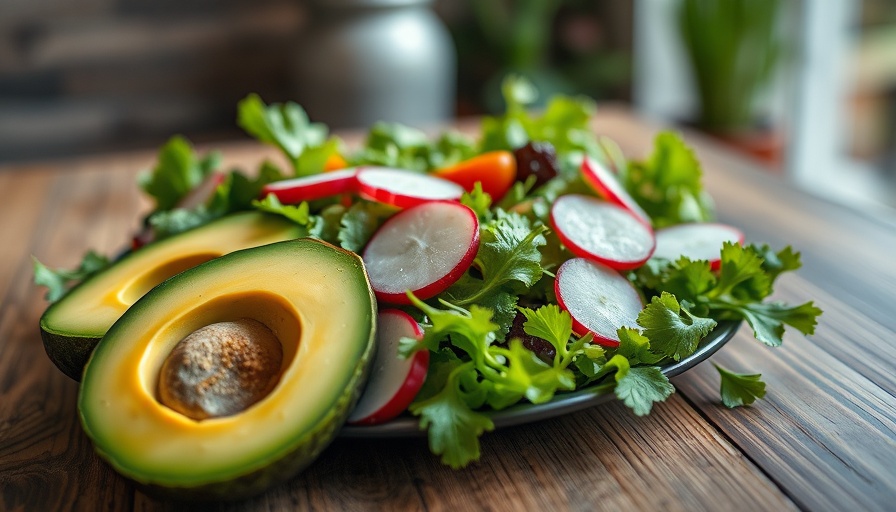
How Protein and Micronutrients Can Transform Your Health
For many of us, the relationship with food is complicated. Diets, calorie counting, and weight management often overshadow the fundamental purpose of food: nourishment. In my journey toward better health, I stumbled upon a principle that shifted my perspective entirely—a focus on protein and micronutrients as the cornerstone of wellness.
The Shift to a Nourishing Mindset
Countless people find themselves trapped in the exhausting cycle of calorie counting. We’ve been told that consuming fewer calories is the best way to shed those stubborn pounds. However, this approach often doesn’t take into account the individual variations in metabolism, hormonal balance, and nutrient needs that many people, especially women with hormonal imbalances or thyroid issues, experience.
Through my personal exploration of health and well-being, I learned that while calories do matter, it's the quality of those calories that has the most significant impact on overall health. According to J.J. Virgin, "Your body is not a bank account; it's a chemistry lab." This understanding was pivotal for me, especially as I moved away from strict dieting and towards a more wholesome approach to eating.
Understanding Macronutrients vs. Micronutrients
Nutrition often centers around macronutrients—proteins, fats, and carbohydrates. While this focus is important, it frequently overshadows the crucial role of micronutrients—vitamins and minerals that are vital for our health. Our modern diets lack the nutrient density that foods once provided; therefore, we need to give conscious attention to our micronutrient intake.
The potential consequences of micronutrient deficiencies can be staggering. Research suggests that not getting enough micronutrients can lead our bodies to crave more calories in an attempt to compensate for the lack of essential nutrients. Thus, we find ourselves in a cyclical pattern of overeating without truly nourishing our bodies. This opens the door for stress, fat retention, and hormonal disruptions, all of which can negatively affect our health.
The Impact and Power of Micronutrients
Micronutrients like magnesium are essential for hundreds of processes within our bodies. A deficiency in magnesium, for example, can lead to increased cortisol levels, weight gain, and relationship struggles involving stress and cravings. In contrast, a diet that supports adequate micronutrient intake can stabilize hunger signals, boost energy levels, and enhance our mood.
Sometimes, cravings can offer insights about what our bodies are lacking. Craving salty foods might indicate low magnesium levels, while yearning for sweets could signal a deficiency in protein. Recognizing the body's signals helps guide smarter dietary choices that nourish rather than just fill.
The Role of Quality Caloric Intake
Emphasizing both quality and quantity of food can significantly change one's body chemistry. This balanced approach allows the body to receive the nutrients it needs to function properly, reducing compensatory eating behaviors often driven by deficiencies. It is crucial to focus on nutrient-dense foods, packed with vitamins and minerals, to facilitate healthy metabolic functions.
Addressing Common Micronutrient Deficiencies
While dietary choices are critical, external factors—like chronic illnesses or strict dieting—may impair nutrient absorption. The most common deficiencies include iron, vitamin D, calcium, and B vitamins, all of which are essential for various bodily functions from metabolism and hormone production to emotional well-being and immune response.
Moreover, population studies show alarming trends in nutrient inadequacies. For instance, many adults and children in the United States do not meet the recommended intake for vital nutrients. This highlights an opportunity to encourage dietary strategies and adjustments to elevate our health.
Making Nutritional Choices
Making informed decisions about our diets is essential in tackling these deficiencies. Nourishing snacks with nutrient-dense components, such as nuts, seeds, and fruits, can provide the micronutrients we often lack. Moreover, educational initiatives on the importance of dietary supplements can assist in bridging the gap for those unable to attain sufficient nutrients through food alone.
Conclusion: Take Charge of Your Health
In essence, the quest for health doesn't have to be about restricting what we eat or obsessively counting calories. Instead, focus on enriching your diet with quality sources of protein and micronutrients. By nurturing our bodies and addressing potential nutritional gaps, we can make strides toward improved health and wellness. So, let’s shift our mentality and recognize that the transformation starts with simple, mindful choices that prioritize nourishment.
Start your journey to better health today by being more conscious about the nutrients you consume. Incorporate a diverse range of foods guided by quality over quantity, and watch how your body responds positively.
 Add Row
Add Row  Add
Add 




Write A Comment